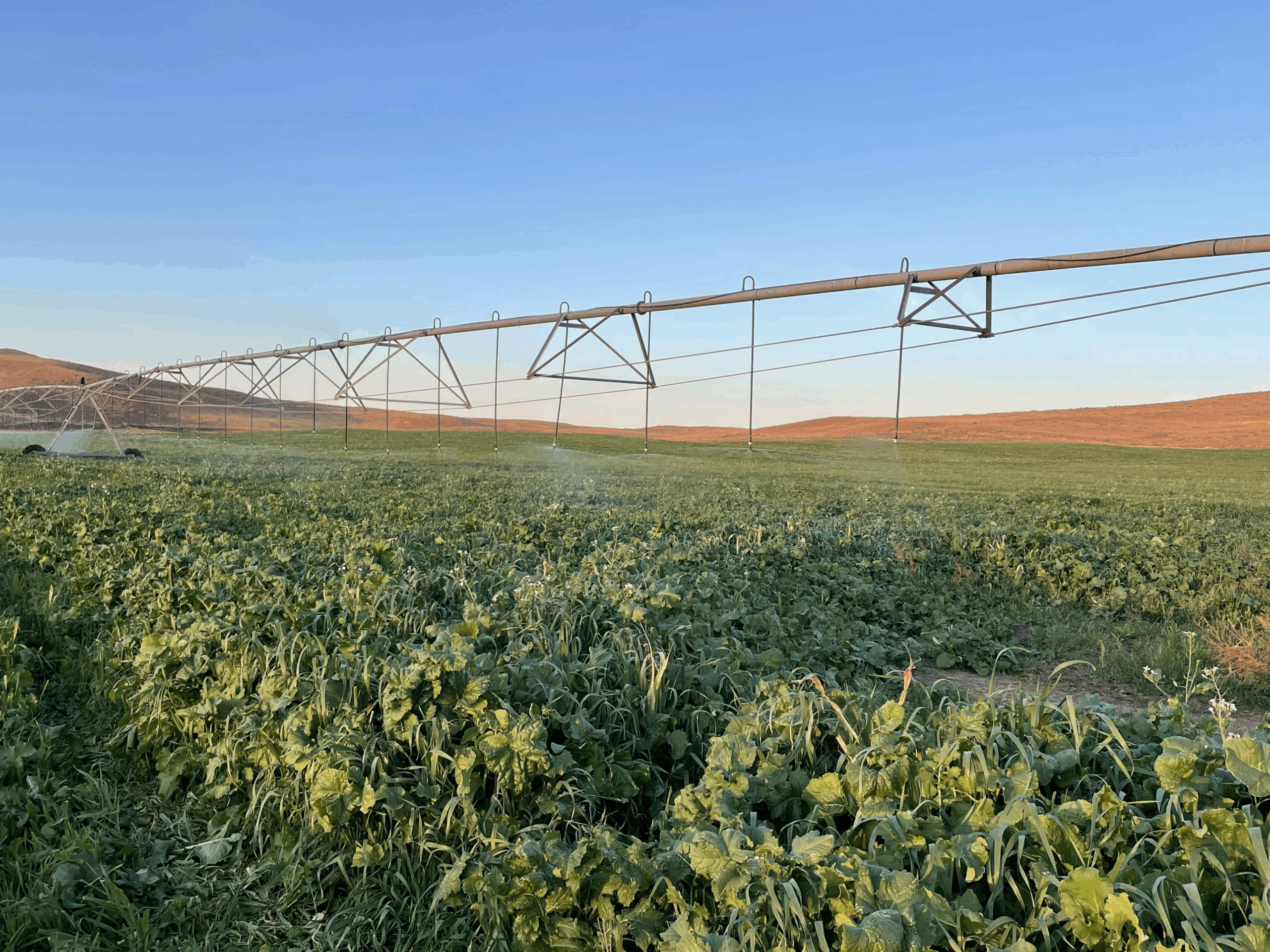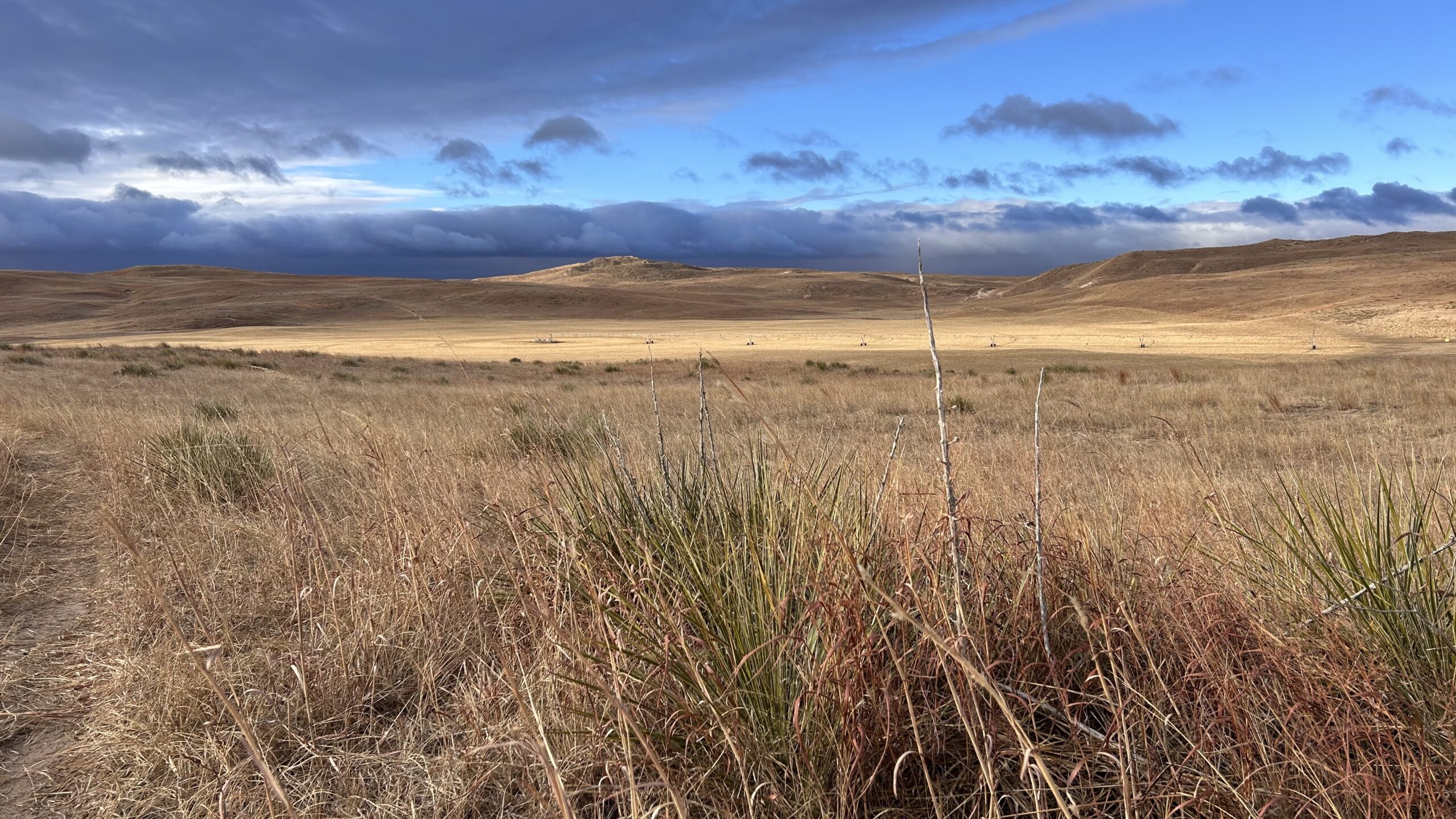
By Sheridan Wilson, Technical Advisor, Grazing Systems
As the seasons shift, so do the priorities on every operation. Grazing management doesn’t stop with summer. Fall can be one of the most valuable seasons for extending the grazing window and reducing input costs.
Grazing fall forages can help reduce hay and feed costs, improve soil health, and give native perennial pastures a chance to rest and recover. Wintering perennial pastures also boosts pasture health by decreasing bare ground and utilizing senesced grass at a time when cattle nutrient requirements are low.
To help make the most of your fall grazing window, we’re breaking down a few key strategies — from planting fall cover crops to managing perennial forages and putting native pastures to work.
Annual Fall Covers
Planting annual fall cover crops is a practical way to increase forage availability and support soil health heading into the cooler months.
Timing
To get the most out of your cover crop investment, timing is everything.
Start by identifying your average first frost date. For best results, aim to seed your cover crop 45–60 days before a hard frost, while keeping soil moisture conditions in mind. Early planting is especially important if you plan to graze the cover. Giving the crop enough time to establish ensures a better return.
Frost dates and growing windows vary by region. As the chart shows, producers in Eastern South Dakota, Eastern Nebraska, Eastern North Dakota, and most of Iowa and Minnesota typically have a longer planting window. Meanwhile, Western South Dakota, Western Nebraska, and Western North Dakota face a more moderate timeline. Montana and Wyoming have shorter growing seasons due to higher elevation, so acting early is even more critical in those areas.
Species Selection
Next, it’s important to select species that support your operation’s goals and weather conditions. Cereal grains like oats, rye, triticale, or barley provide biomass and tolerate cold well. Brassicas like radishes, turnips, or kale improve soil health, grow fast in cool conditions, and provide high-protein forage. Annual legumes like clovers and peas add protein and fix nitrogen. Keep in mind that some species, like rye and hairy vetch, overwinter and may need spring termination.
As they say, variety is the spice of life. And, that’s true of your soil, too. A mix of these species provides the best forage quality and soil benefits.
Table 1: Planting Windows for the Great Plains
Frost and seeding dates differ for everyone, but this chart shows a general timeline of when to plant, depending on the species you choose.
| Eastern SD, ND, NE and IA, MN | Western SD, NE, ND | MT & WY |
|---|---|---|
| Oats: Fast, high-quality forage; winterkills | ||
| Spring: Mar 15–May 1 Fall: Aug 1–Sept 15 |
Spring: Mar 15–May 1 Fall: Jul 25–Aug 25 |
Spring: Apr 1–May 15 Fall: Jul 15–Aug 15 |
| Spring Triticale: High biomass potential; quick to mature | ||
| Spring: Mar 15–May 1 Fall: Aug 1–Sept 15 |
Spring: Mar 15–May 1 Fall: Jul 25–Aug 25 |
Spring: Apr 1–May 15 Fall: Jul 15–Aug 15 |
| Winter Rye: Excellent cold tolerance; spring forage | ||
| Aug 15 – Oct 10 | Aug 15 – Sept 15 | Aug 10 – Sept 5 |
| Winter Wheat: Grain or spring grazing; limited fall forage | ||
| Sept 1 – Oct 10 | Aug 15 – Sept 15 | Aug 10 – Sept 5 |
| Radish: Great compaction breaker; fast growth | ||
| Aug 1 – Sept 5 | Jul 25 – Aug 20 | Jul 15 – Aug 10 |
| Turnips: Excellent fall grazing; needs early start | ||
| Aug 1 – Sept 10 | Jul 25 – Aug 20 | Jul 15 – Aug 10 |
| Rape / Kale (Brassicas): Cold-hardy brassicas; works in mixes | ||
| Aug 1 – Sept 10 | Jul 25 – Aug 20 | Jul 15 – Aug 10 |
| Peas / Vetch (Annual Legumes): Adds protein and fixes nitrogen | ||
| Spring: Mar 15–May 1 Fall: Aug 1–Sept 15 |
Spring: Mar 15–May 1 Fall: Aug 1–Sept 15 |
Spring: Apr 1–May 15 Fall: Jul 15–Aug 15 |
| Barley: Tolerates cool soil but not frost | ||
| Mar 15 – May 1 | Mar 15 – May 1 | Mar 15 – May 1 |
| Millet: Needs >60°F soil; frost-sensitive | ||
| Jun 1 – Jul 15 | Jun 1 – Jul 15 | Jun 1 – Jul 15 |
Perennial Forages
Utilizing perennial forage crops is another great way to open the door to new grazing opportunities in the fall – especially if a stand was planted this spring or hayed and allowed to regrow.
Grazing Options for the Fall
- Alfalfa and alfalfa-grass mixes can be grazed after freezing, but monitor frequently for bloat.
- Cool season forage grasses like meadow brome may green up in the fall, providing high-quality forage. Avoid grazing too heavily while the plants are still green by leaving 6-8″ of regrowth going into winter to maintain adequate energy stores and prevent winterkill.
Looking Ahead
Fall is also a great time to do frost seedings or plan for next spring’s forage plantings. Many species require vernalization and fall planting helps set next year’s forage stand up for success while using a grazing management plan and incorporating regenerative grazing.

Native Pastures
Another option for fall and winter grazing is using native pasture. Dormant pasture can have significant benefits for decreasing bare ground by breaking off senesced grasses and integrating them into the soil through hoof action. For graziers using intense rotations to manage forage regrowth, winter can be a time to relax the rotation and save labor. Winter grazing can even provide an opportunity to shift the plant community and promote a diverse crop rotation.
One example of this can be seen in the Nebraska Sandhills. Pastures that are never wintered tend to have more yucca and bare ground, while wintered pastures have more soil cover and warm season grass growth. Dormant season grazing preceded or followed by rest can boost range health and forage production.
Turning Plans into Action — with the Right Help
With the right plan in place, you can extend your grazing season, reduce input costs, and set your pastures up for better performance next year.
As a Technical Advisor, I work directly with producers through AgSpire’s programs to develop grazing plans that fit their land, herd, and goals — and then help put those plans into action. So, whether you’re testing out a new forage mix, giving perennials time to recover, or looking for ways to do more with what you’ve got, we’ll figure out what makes sense for your operation.
To learn more about our programs and how they can help improve your fall forage, fill out the form below.
About the Author
Sheridan Wilson, Technical Advisor for Grazing Systems
As a Technical Advisor at AgSpire, Sheridan works directly with ranchers to improve grazing systems and support the long-term health of native rangelands. She grew up on her family’s cow/calf operation in western Nebraska and brings hands-on experience, technical knowledge, and a deep passion for the land, livestock, and people who steward them.
Sheridan holds a B.S. in Grassland Systems from the University of Nebraska–Lincoln and has worked with Nebraska Extension, NRCS, and Green Cover.